Slippery foods, mushy foods, bready foods, crunchy foods, mixed textures…there are so many ways that texture aversions can manifest in our kids. To help, I’ll share tips for how to offer challenging foods to your kids to help them learn to eat them in all sorts of ways!
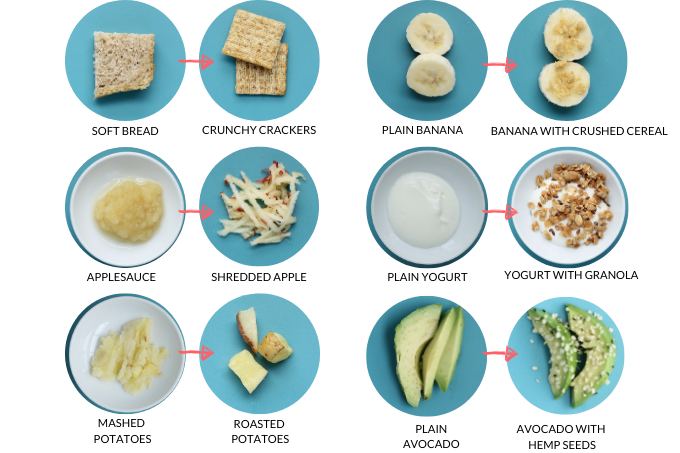
Texture Aversions
It’s no surprise that it takes time for our little ones to learn to eat, but it might come as a surprise that it can take a fair amount of time for toddlers to be able to handle certain textures. And because there’s such a wide range of normalcy on this topic, it can feel isolating when your kiddo won’t touch foods like meat or bread or any finger foods…and all of their little friends are scarfing it down.
Is it picky eating…or texture aversions?
With my first child, I hardly remember experiencing any texture challenges. She loved meat right from the start and took to almost everything I introduced to her with gusto. So I was completely caught off guard when baby number two struggled more with certain foods. It took her until she was four to actually want to eat meat. Until she was 16 month old, she like anything with the texture of a muffin or a pancake. And the week she turned 17 months was the first time she could actually chew and swallow tiny cubes of very lightly toasted bread.
None of this, in itself, is a big deal. But when you’re trying to feed your little one a range of healthy foods, eliminating entire food groups like bread and meat can make things feel almost impossible.
Meet Jenny Mc Glothlin
Jenny McGlothlin is a co-author of Helping Your Child with Extreme Picky Eating and is a Speech Language Pathologist who works in the responsive feeding program at the UT Dallas Callier Center. She helped me sort through some of the most common texture issues, and explained what’s normal and what’s not as your baby turns into a toddler, then keeps on growing and turning into a big kid.
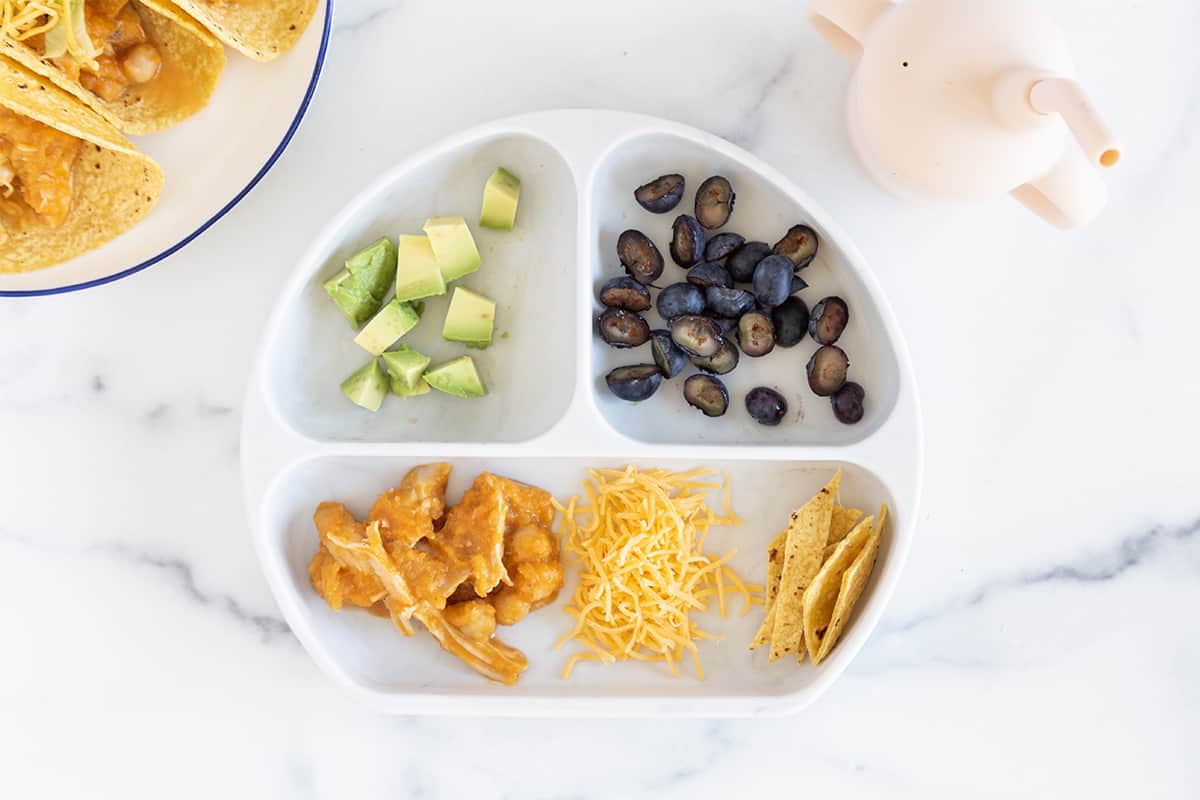
Tips for Toddlers Who Struggle with Mixed Textures
“Mixed textures are difficult for toddlers who are just learning how to manage the manipulation of one texture. Casseroles, vegetable soup, etc. can overwhelm them and they may spit out pieces of things they don’t know what do with. Deconstructing mixed foods (separating out the ingredients from a stew/soup/casserole) can reduce the oral motor load and also allow your toddler to approach each item separately.” —Jenny
- With something like chili, you can separate the ingredients in the bowl and limit the amount of liquid so you’d have a little pile of beans, meat, and perhaps cheese next to each other. This allows the child to clearly see what’s in their bowl and eat one food at a time.
- If serving lasagna, perhaps you hold back a small portion of each ingredient so your child can eat them separately.
- If serving tacos, put the ingredients on the table in family-style bowls and allow the child to decide what of the foods to put on their plate.
Tips for Kids Who Dislike Mashed or Sticky Foods
“Many toddlers have trouble with very sticky foods such as mashed potatoes or peanut butter. You might see gagging or holding the mouth open, as the food coats their tongue. Thinning these foods out (with milk for potatoes, a little water for PB) can help them manage these foods and swallow them more successfully.” —Jenny
- Use a 1:4 ratio of peanut butter to water and stir it up until it’s the consistency of yogurt. This is much less sticky than straight nut butter, but still tastes good.
- Try roasted potatoes instead of mashed potatoes.
- Be sure to also offer water with meals so the kids can drink regularly to help foods move around in their mouths.
Tips for Toddlers Who Struggle with Slippery Foods
A common strategy for slippery foods like banana slices, avocado slices, or other produce is to add a sprinkle of another food with a texture onto it to make it easier to hold—and so that it won’t move around your child’s mouth quite so fast.
- Use chia seeds, hemp seeds, sesame seeds, breadcrumbs, crushed dry cereal, or shredded unsweetened coconut as “sprinkles” on slices of banana or avocado.
- Serve slippery foods on a spoon, break bananas up into segments rather than slicing into rounds.
- Spread slippery or mashed foods onto toast to add texture. (Find lots of ideas for toast to help.)
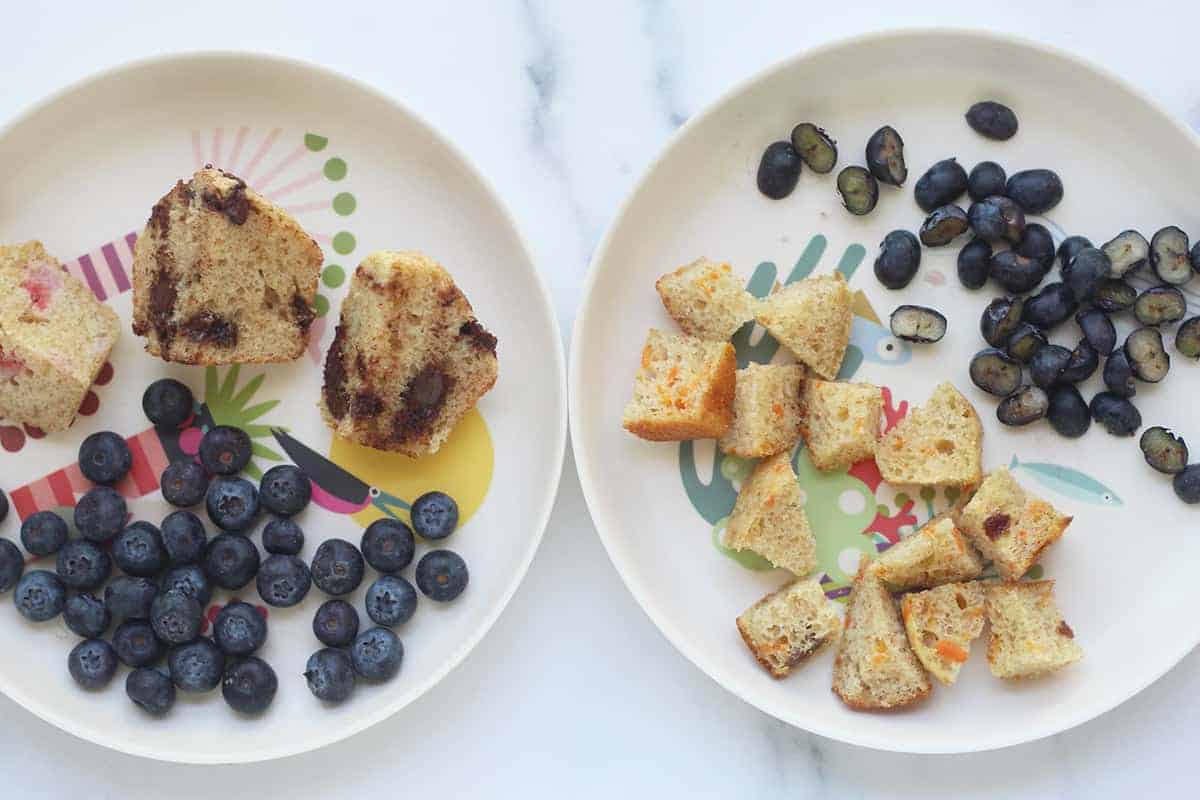
Tips for Kids Who Dislike Bready Foods
“Introduce more firm textures like crackers or shortbread as a way to introduce this type of food. These might be easier to manage for a child who is looking for more [sensory] input than a soft bread can provide. Serve bread or muffins or whatever other food item you are presenting as part of a meal, family-style, so your child can see the food, see you eating the food, and perhaps engage with the food on their own terms. Crumbling a muffin on your plate is great fun!” —Jenny
- Consider lightly toasting bread instead of serving it soft.
- Try crackers, toasted muffins, breadsticks, toasted pita bread, and the like. Just be sure to choose options that dissolve fairly quickly to reduce any choking concerns. (So a Breton cracker over a Triscuit for a one year old.)
- Spread apple butter or applesauce onto pancakes or waffles to add moisture.
- Always offer a drink with muffins and bread to make sure your child has easy access to them if a food seems to get stuck in their mouth.
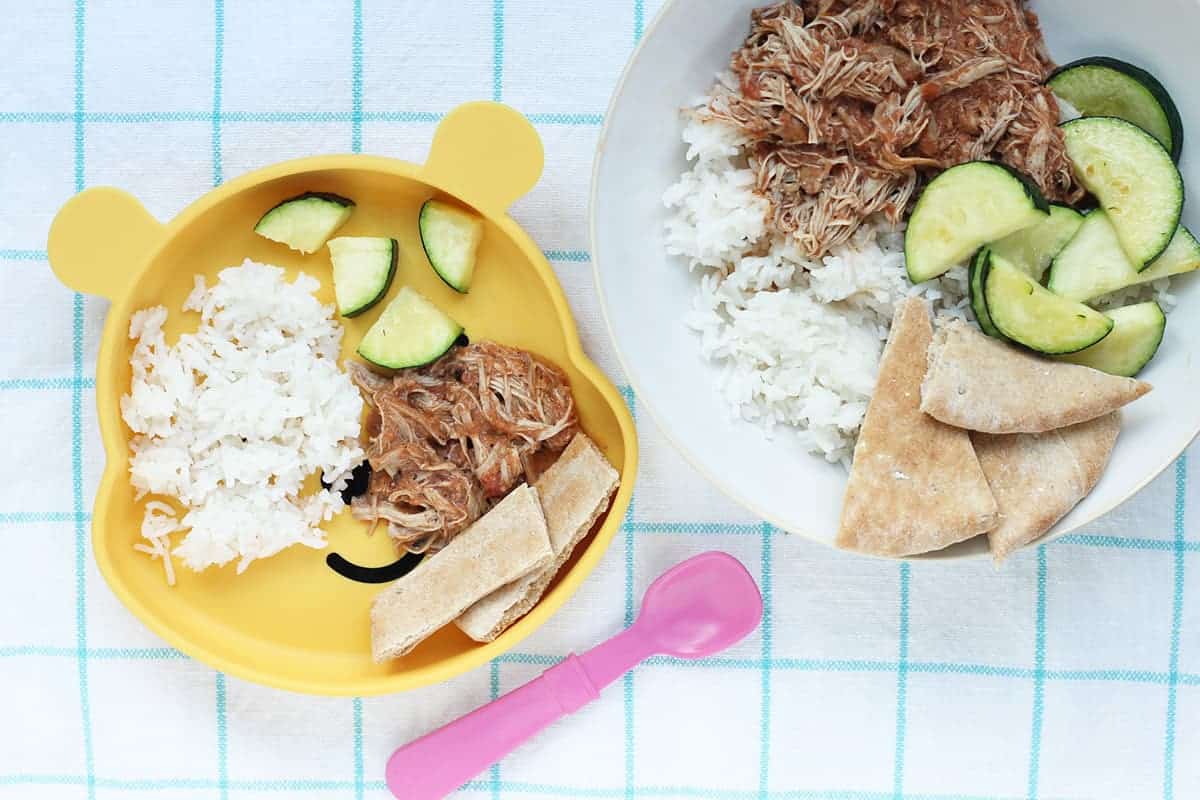
Tips for Toddlers Who Dislike Meat
“Meat is a difficult texture to chew and takes a lot of work (and more time) from a strength standpoint, and children are going to do whatever is easiest! If your child avoids meat or chews and then spits them out, don’t despair—keep presenting them alongside foods they enjoy eating. Soft meats such as fish (salmon is often a favorite), crockpot roast or brisket shredded, and minced chicken salad are all good ones to try.” —Jenny
- Try meatballs, cut up or mashed.
- Blend fully cooked beef into Marinara Sauce.
- Shredded meat or chicken will always be easier for a child to eat than grilled or pan-fried, especially with steak. (This Butter Chicken is a good option.)
- Try offering deli meats cut up into very soft and small pieces.
TIP: Read more about what to do if your child is averse to all meat here.
By what age do these texture aversions tend to resolve?
“Every child is different and has their own preferences, and some children with texture sensitivities can hold on to their challenges into elementary school. Most toddlers go through a picky, neophobic* stage beginning around 14-16 months, and lasting until around age 5. Texture preferences can change! Also, many children need to have crunchy foods with every meal in order for their sensory system to function at the most alert level, so be sure to include those foods if your child appears to be a sensory seeker.” —Jenny
*”Neophobic” is common phase in toddlerhood of refusing and avoiding new foods. As Jenny says, it usually improves around age 5—but that is an average and every child is different, so it may not happen until 7 or 8 with your child. (A flip switched in my oldest at age 6!)
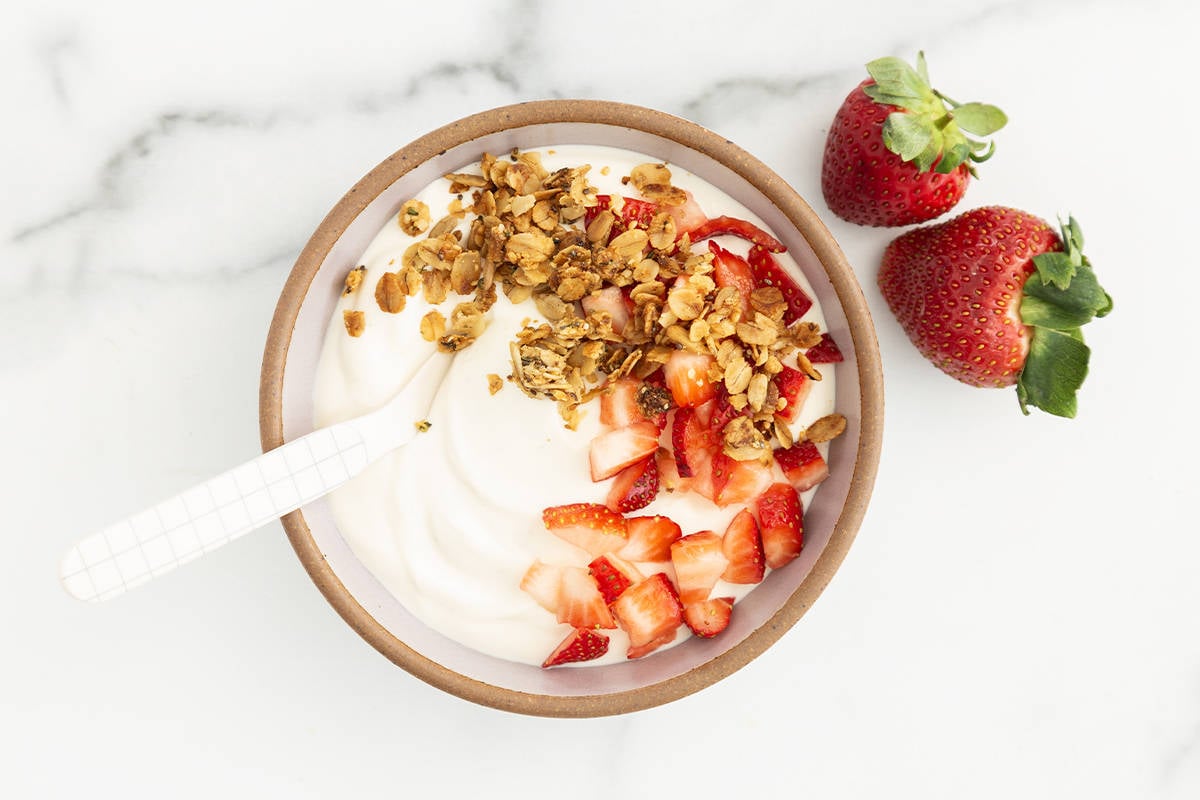
More Tips for Helping Kids with Texture Aversions
- Remember that it takes time for kids to learn to eat all of the various textures available to us.
- Serve very small portions to reduce mealtime stress.
- Allow kids to touch, taste, nibble, spit out, and explore their food as needed. All of that exposure, even if they don’t actually swallow the food, is helpful progress.
- Allow kids to explore food away from the table at the grocery store, farmer’s market, in the garden, while helping you cook, and more where there is likely to be less pressure.
- You can add more information to foods by making them distinctly hot or cold, rather than warm temperature.
- Be sure to always offer a drink at meals and keep it where your child can easily reach it.
- Allow kids to have their own unique likes and dislikes—it’s okay if they prefer some textures over others!
- Continue to serve a variety of foods, pairing foods you know they usually like with ones that are more of a challenge so that there’s always a “safe” food on their plate and exposure to additional foods you want them to eat.
When to Seek Professional Help
According to Jenny, these are signs that you may want to reach out to your pediatrician and/or a feeding therapist for help. (A small amount of texture aversions can be normal, but if some or all of these things are happening or you just feel it in your gut that something isn’t quite right, do reach out for help.)
- Child regularly gags or vomits at each meal (with consideration for transitions to textured food).
- Child is not eating enough in terms of quantity or variety to support healthy emotional, physical or social development.
- Parent reports significantly different mealtime behaviors than you see at school.
- Child isn’t chewing well, spits out food after chewing, or can’t keep food in their mouth.
- Child swallows food whole. (Here’s how to tell if your child isn’t chewing: Child younger than 3, but “chews” with mouth closed; Child chokes or gags while eating; Child winces during swallowing; You can identify whole pieces of food in diaper or vomit; Child is constipated; Child fails to maintain weight despite eating age-appropriate amounts of food; Child stuffs mouth full of food while eating and often needs reminders to slow down and take smaller bites.”
If you want to read more about common and less common feeding issues, I highly recommend Jenny’s book Helping Your Child With Extreme Picky Eating.
Related Posts
I’d love to hear any additional questions you may have on this topic, so please chime in below!
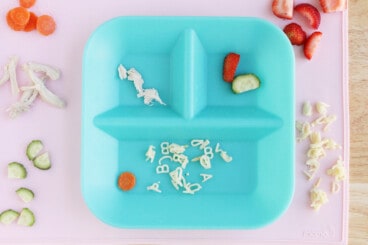

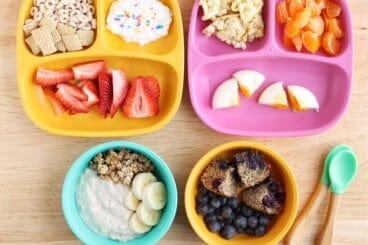
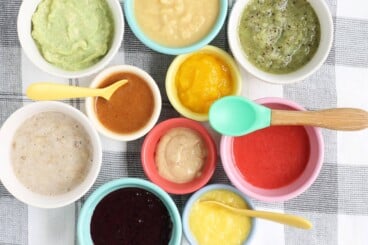


















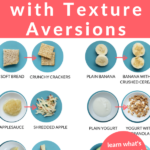
What is a good supplement for a 7year old, anyone has luck with. My little one has a lot of belly aches I think because she doesn’t eat well.
What does one do about a 3 year old who refuses to touch anything but fruit, cheese, some crunchy things, and maybe chicken nuggets? His diet is basically 90% fruit during the day. Won’t drink smoothies, touch macaroni sauce (I think I learned yesterday it is a texture thing, he touched a noodle and immediately tried wiping it off) or marinara sauce, no noodles of any kind or meat, toast, I mean you name it, nothing. I am at a complete loss. I try and give varieties and change it up each day, but nothing is working. Do I cut the fruit almost completely? Even when he IS hungry, he still refuses anything but fruit or snacks! Thankfully his 15 month old brother isn’t completely like this, but lately he has been only wanting fruit too.
I would consider if he’s growing, gaining weight, and meeting his milestones, is the pediatrician concerned, is this new or ongoing…all of those are factors that will add context. If there’s a growth issue or he eats less than 20 foods over the course of a whole month, you might consider working with a feeding therapist (or even just one session could give you some individualized help). I wouldn’t cut the fruit. That would likely cut out a safe food and it could make meals more of a power struggle. You may also find some tips in this approach: https://www.yummytoddlerfood.com/the-division-of-responsibility/
My kid is 6 of age and all she eats are French fries from McDonald’s, absolutely no place else! And Lay’s chips she only really drinks milk or sweet tea..she goes through these phases kind of were she’ll have her 1 thing she’ll eat just that and nothing else and then some time will go by and eventually its something else, for example one she would only eat roman noodle only chicken flavored and I would have to pick the little green stuff out that came in the seasoning.At 1 point it chicken nuggets from McDonald’s now she doesn’t eat either of those its French fries
If she’s literally just eating that one food, it could be worth talking to your pediatrician about a referral to a feeding therapist. That might help at this point.
My 11month old was doing really well with solids but now he has started taking the food out of his mouth such as mac and cheese, strawberries, meat. I am just wondering what would cause this if he was eating normal before
Is there teething? A cold? Maybe less of an appetite than you expect? It could also be simple experimenting. If nothing else seems to be different or off, I would try not to make a big deal of it, remind him and demonstrate how to chew, and hopefully it passes quickly!
My 14 month old seems to be having a texture problem with things like vegetables, whether they are cooked or not. I’ve tried putting them in mashed potatoes or baby food to introduce him to the textures. I’ve not tried giving him a lot of meat because he doesn’t chew well. Tonight he ate almost a whole banana. When I gave him a green bean, he gagged until he threw up . He’s getting to where he doesn’t even want to eat baby food. The only thing I can get him to eat well is something sweet and/or crunchy. I don’t know whether to seek a feeding therapist or not, and whether to stop baby food.
Hi- It’s possible that a referral to a feeding therapist might help you suss out what the main issues are here. Kids this age often aren’t as hungry as we expect and they can start to have preferences for certain foods over others, which is normal. If there’s a lot of gagging, even when the food is in small pieces and it’s soft, there’s a lot of gagging with purees, or you are just feeling at a loss for what to feed your child, I would reach out to your pediatrician and ask for a referral. I can also send two names of people who do telehealth but in person is likely most helpful for this situation.
My granddaughter almost 4. She will each mac and cheese, yogurt, and drinks the pedia milkshakes. That is her entire diet. Her doc says don’t worry about it but….
She gags on anything else and now won’t even try.
Have you asked for a referral to a feeding therapist? That might be a good idea given the mention of gagging.
My 3 year old son gags every time he eats a piece of fruit, even if it’s cut up and he doesn’t like pureed fruit either. Sneaking them into muffins or yogurt, etc… hasn’t worked. Any ideas on how to get him to eat them? He is fine eating everything else.
Is it all fruits and has this always been the case or is it new?
How about those applesauce pouches? My daughter likes the strawberry apple and peach apple varieties. Have you let him suck on orange wedges? That might help. Blueberries are my daughter’s favorite. Some kids don’t like fruit because of digestive problems. My brother had issues and it turned out he does better with cooked fruit. You can also try making smoothies like strawberry banana smoothies with milk or yogurt. I’ve also made fresh squeezed orange juice and carrot juices for my daughter.
I believe my 15 month old has texture issues. He will mostly eat pureed food, but will eat some other foods like frozen waffles, french fries, baby puffs and a few other hard/crunchy foods. I want to add more protein to his diet. Any suggestions? He is getting tested for a peanut allergy, so that is not an option right now.
My daughter didn’t like meat until we gave her some grilled chicken with BBQ sauce. She loved the spices. We don’t give them to her often, but she loves sausages too. Trader Joe’s sells great fish sticks that she loves to eat with ketchup.
My little girl is 2 and a half and very particular about beans. She doesn’t like them whole or refried. And I’ve tried different varieties too, with no luck. She will spit them out if they are hidden in a burrito or soup. I keep putting them on her plate so she has a chance to try them again, but after about 30 times of trying this I’m about ready to give up. It’s too bad because beans are so nutritious. She is definitely sensitive to other food textures too. Any suggestions to get her to eat beans?
What are her other sensitivities? Not every kid likes every food so it’s possible she’s just not a fan. Maybe take a break from trying for a little bit and then try again? That could help reset her assumptions about them…
Hi there! We have a very picky eater. It’s so hard to tell if it’s texture issues or stubbornness. But he refuses to touch beef. He eats chicken, fish sticks, and sometimes bacon. He likes yogurt, cheese, applesauce, eggs and oats. But if I make anything like roast, chicken pot pie, chili, tacos, … pretty much anything not in the afore mentioned list… he won’t touch it. The only veggies he eats are tomatoes. (Cherry).
Feel like we are at a standstill with our 2 year old!!!
Wondering if it’s worth getting a dietician consult or just wait it out.
He has always been lower on growth chart.
Thank you for your time!
Alicia
Hi- Without knowing more about how he behaves at meals, how he’s growing (kids are normal at all spots on the growth curve, as long as they are following their own curve), whether you’re able to enjoy meals as a family, it’s hard to say specifically. But from what you describe here, it sounds like very typical toddler eating habits. In this situation, I could consider reading about the method called Division of Responsibility, making sure that meals are low pressure and easy for him to eat, and know that it takes a long time for kids to learn to eat a wide variety of foods. They each have natural likes and dislikes (flavor and texture) and that doesn’t make them picky or somehow wrong, just kids who are learning. I know it can be frustrating to make family meals when the kids don’t eat everything, which is why the Division of Responsibility can be useful. Also, I simply aim to include 1-2 foods with any meal that the kids usually like even if those foods are simple sides to keep everyone happy and sane. I hope that helps. If the child is anxious about foods, if you are really stressed and anxious in a way that is making it hard to feed your family, he is falling off of his growth curve, eats less than 15-20 foods over the course of a whole month, then you might consider getting more specific help.